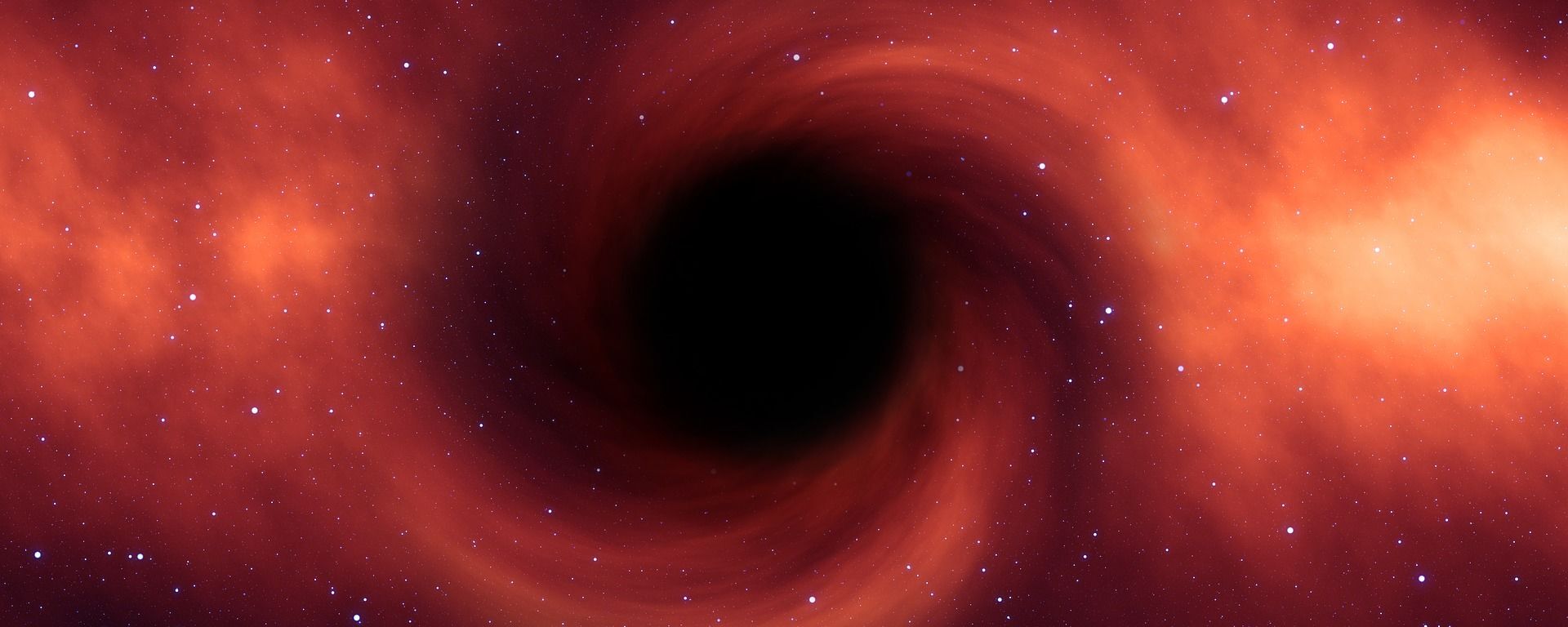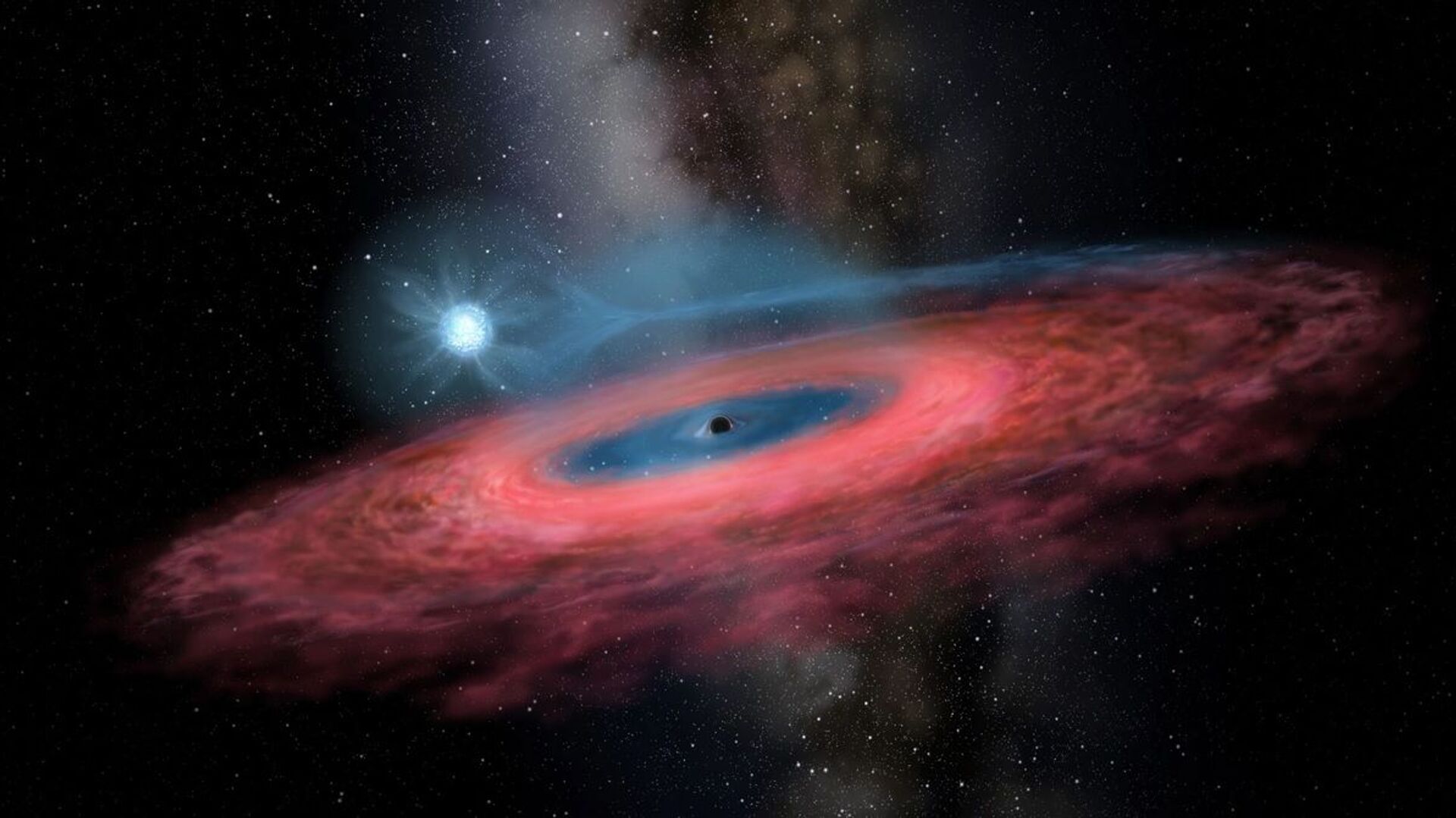https://sputnikglobe.com/20230915/closest-black-holes-are-likely-much-closer-than-we-think-astronomers-say-1113385907.html
Closest Black Holes Are Likely Much Closer Than We Think, Astronomers Say
Closest Black Holes Are Likely Much Closer Than We Think, Astronomers Say
Sputnik International
A new study indicates that there likely are black holes around 150 lightyears from Earth, around ten times closer than previously thought.
2023-09-15T03:48+0000
2023-09-15T03:48+0000
2023-09-15T03:46+0000
beyond politics
royal astronomical society
barcelona
earth
science & tech
gaia
black hole
https://cdn1.img.sputnikglobe.com/img/107742/39/1077423962_3:0:1196:671_1920x0_80_0_0_b7657d49ee1984d7f3483edd1e53036b.jpg
A team of astronomers says they have found evidence that there is a group of black holes 10 times closer to Earth than any previously discovered.The new research, published in the journal Monthly Notices of the Royal Astronomical Society this month, says there are likely two and possibly three small black holes in the center of the Hyades cluster, the closest star cluster to our solar system.The astronomers used data from the European Space Agency’s star-mapping Gaia satellite to simulate 650 million years of star movement in the Hyades cluster. Their study contends the stars could not move the way they have unless there are, or at least were, two or three small black holes affecting their gravity.The Hyades cluster consists of 724 star systems and is about 150 light-years (900 trillion miles) away from Earth. The next closest-known black hole is the Gaia BH1, about 1,500 light-years away.The suspected black holes could only be stellar-mass black holes, the smallest classification of black holes. They contain between five and 10 times the mass of our sun. One scenario shown in the simulation that would explain the Hyades’ star movements is that the black holes were there but were ejecting from the cluster around 150 million years ago.If that is the case, they’d likely be just outside of the cluster at this point and would still easily be the closest known black holes to Earth.“This observation helps us understand how the presence of black holes affects the evolution of star clusters and how star clusters in turn contribute to gravitational wave sources," Mark Gieles, a member of the University of Barcelona Department of Quantum Physics and Astrophysics said. “These results also give us insight into how these mysterious objects are distributed across the galaxy.”
https://sputnikglobe.com/20230907/snacktime-astronomers-spot-black-hole-that-takes-bite-out-of-star-every-month-1113188926.html
barcelona
earth
Sputnik International
feedback@sputniknews.com
+74956456601
MIA „Rossiya Segodnya“
2023
News
en_EN
Sputnik International
feedback@sputniknews.com
+74956456601
MIA „Rossiya Segodnya“
Sputnik International
feedback@sputniknews.com
+74956456601
MIA „Rossiya Segodnya“
black holes, what is the closest black hole, hyades cluster, how many black holes are there, will earth fall into a black hole
black holes, what is the closest black hole, hyades cluster, how many black holes are there, will earth fall into a black hole
Closest Black Holes Are Likely Much Closer Than We Think, Astronomers Say
Only a couple dozen black holes have been found in our galaxy so far, but scientists believe there could be hundreds of millions inside our galaxy in addition to the supermassive black hole that sits in the center of the Milky Way.
A team of astronomers says they have found evidence that there is a group of black holes 10 times closer to Earth than any previously discovered.
The new research, published in the journal Monthly Notices of the Royal Astronomical Society this month, says there are likely two and possibly three small black holes in the center of the Hyades cluster, the closest star cluster to our solar system.
The astronomers used data from the European Space Agency’s star-mapping Gaia satellite to simulate 650 million years of star movement in the Hyades cluster. Their study contends the stars could not move the way they have unless there are, or at least were, two or three small black holes affecting their gravity.
The Hyades cluster consists of 724 star systems and is about 150 light-years (900 trillion miles) away from Earth. The next closest-known black hole is the Gaia BH1, about 1,500 light-years away.

7 September 2023, 20:16 GMT
The suspected black holes could only be stellar-mass black holes, the smallest classification of black holes. They contain between five and 10 times the mass of our sun. One scenario shown in the simulation that would explain the Hyades’ star movements is that the black holes were there but were ejecting from the cluster around 150 million years ago.
"Our simulations can only simultaneously match the mass and size of the Hyades if some black holes are present at the center of the cluster today (or until recently)," lead study author Stefano Torniamenti said in a statement.
If that is the case, they’d likely be just outside of the cluster at this point and would still easily be the closest known black holes to Earth.
“This observation helps us understand how the presence of black holes affects the evolution of star clusters and how star clusters in turn contribute to gravitational wave sources," Mark Gieles, a member of the University of Barcelona Department of Quantum Physics and Astrophysics said. “These results also give us insight into how these mysterious objects are distributed across the galaxy.”
Black holes are nearly invisible to scientists unless they are actively consuming matter. When they add to their size by swallowing interstellar gas, dust and even stars, they emit bright flashes of light that can be seen across vast expanses of the universe.
However, when they are not feeding, they emit no light, and are very difficult to spot directly. Instead, astronomers look for the gravitational pull they have on other objects, particularly stars.



